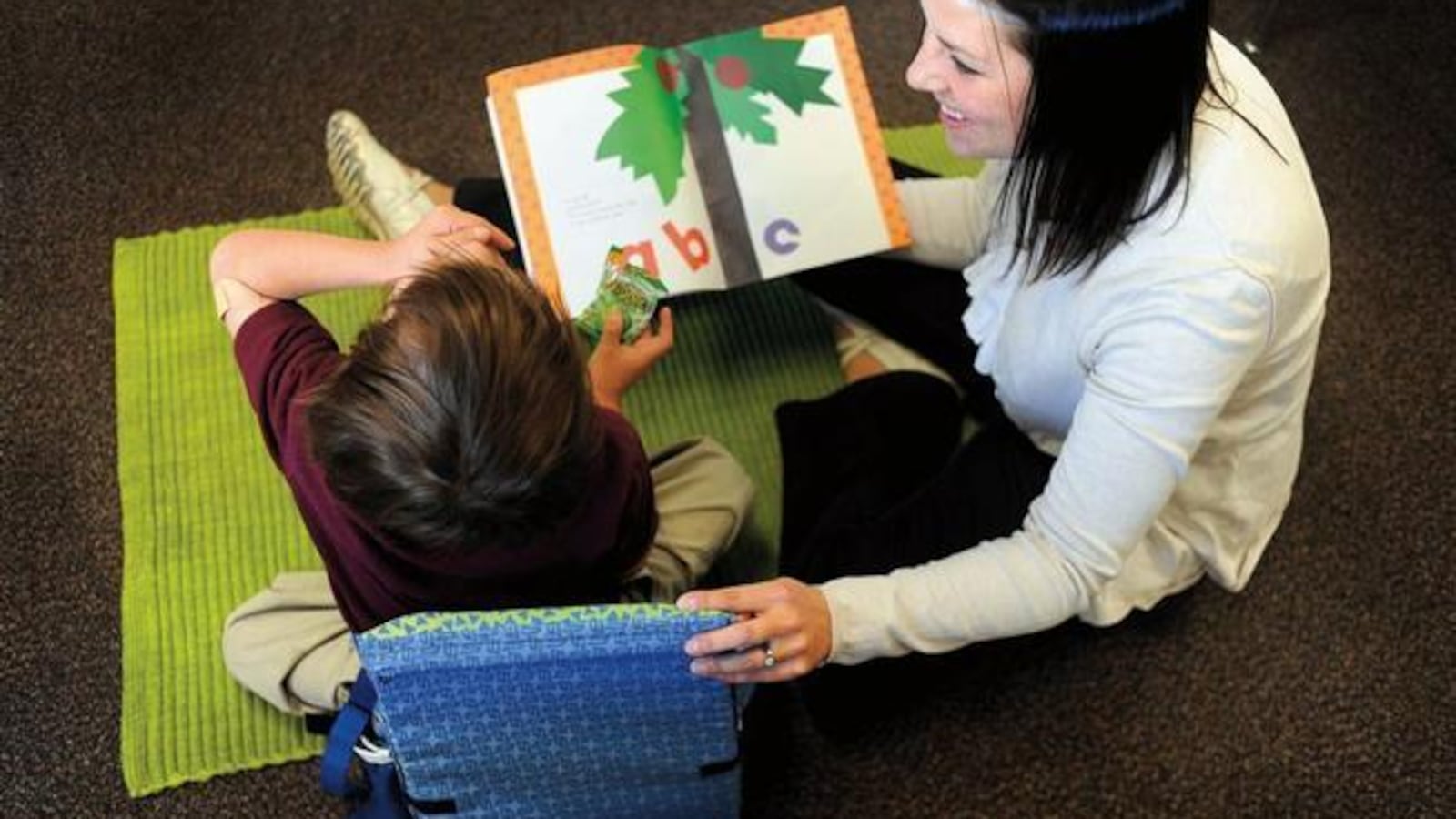Being a new teacher is notoriously difficult — and schools often make it even tougher.
New research out of Los Angeles finds that teachers in their first few years end up in classrooms with more struggling students and in schools with fewer experienced colleagues, making their introduction to teaching all the more challenging.
The differences between the environments of new teachers and their more experienced teachers are generally small, but they appear to matter for both students and teachers. The tougher assignments hurt new teachers’ performance and their career trajectories — and mean that students who are the furthest behind are being taught by the least experienced educators.
It’s a long-standing issue that states and districts have struggled to address and that concerns civil rights groups.
“More than anything else in schools, teaching quality has greatest impact on student achievement and student success,” said Allison Socol of the Education Trust. “And we know that the impact of strong teachers is greater for students who are further behind academically.”
The latest study is notable in scope, looking at a decade of data on teachers in the country’s second-largest school district. The researchers compared newer teachers to teachers who had been in the classroom for six years or more, from the 2007-08 school year until 2016-17.
They found that first-year teachers served more struggling students — those who started the year with lower test scores, lower grades, and higher suspension and absence rates — than more experienced teachers. The differences were small but consistent.
Novice middle and high school teachers were also more likely to work with students learning English (7 percentage points more), students from low-income families (6 percentage points), and students with disabilities (1 percentage point). And it’s not just a first-year effect: the results generally hold for teachers in years two through five.
This isn’t simply because younger teachers work in entirely different schools. Often, novice teachers are serving more disadvantaged students than their veteran colleagues down the hall.
“One of the things we see is that the stronger teachers or the more experienced teachers are often the ones who teach the advanced classes,” said Socol, referring to research on the issue more broadly.
Teachers usually improve with experience, particularly in their first few years, so the latest results mean that students who are struggling the most are often getting the least qualified teachers.
Los Angeles Unified, responding to the fundings, said its staffers try to assign teachers fairly.
“Los Angeles Unified has counselors at schools and counseling coordinators at our six local districts who prepare master schedules that are equitable for students and built around the skills and competencies of our teachers,” Los Angeles deputy superintendent Vivian Ekchian said in a statement. “National Board Certified teachers, mentor teachers and coaches work closely with our novice teachers to support them in their career development.”
New teachers didn’t have tougher jobs by every metric. While novice elementary school teachers had slightly larger class sizes, middle and high school teachers had smaller classes (by about 1.5 students) and fewer distinct courses to prepare for than their more experienced colleagues.
But newer teachers also tended to have colleagues who had less experience and lower evaluation ratings themselves.
The researchers demonstrate that new teachers in more challenging contexts also performed worse, missed more days of school, and were more likely to leave their school. That means that new teachers’ assignments matter both in the short term — for how they perform in their classrooms — and in the long term, for whether they stay there.
Again, though, the impact was fairly small: About 20 percent of teachers departed their schools by the end of the year, and that fell by 1 point for teachers with less difficult workloads.
“Retention and support of teachers, especially novice teachers, has critical implications for school operations and, in turn, student learning and achievement,” write the researchers, Paul Bruno and Sarah Rabovsky of the University of Southern California and Katharine Strunk of Michigan State University.
The results overlap with past research showing that students from low-income families and students of color get less qualified and effective teachers, though these disparities are often modest.
Still, Socol of Education Trust said, “We know that these gaps aren’t inevitable.”
What could help? Not assigning new teachers to the most demanding classes, perhaps, and making sure they have a network of effective colleagues. Past research has suggested that better principals and more collaborative school environments can help teachers improve and encourage them to remain in the classroom.
“It’s very much about the systems of supports that we provide for those novice teachers,” said Socol.
Improving teacher preparation could help, too. Research has found that pairing student teachers with effective mentors can boost novice teachers’ skills.
Studies have shown that bonuses designed to get effective teachers to transfer into and stay in high-needs classrooms can help reduce the share of novice teachers in those classrooms.
Many of these strategies cost money. In Los Angeles, teachers recently went on strike in part over complaints about inadequate resources.
“We should situate this in a broader conversation about about resource equity,” said Socol. “It’s really important that we equitably allocate dollars … to the schools and districts to the schools and districts that need them the most.”


